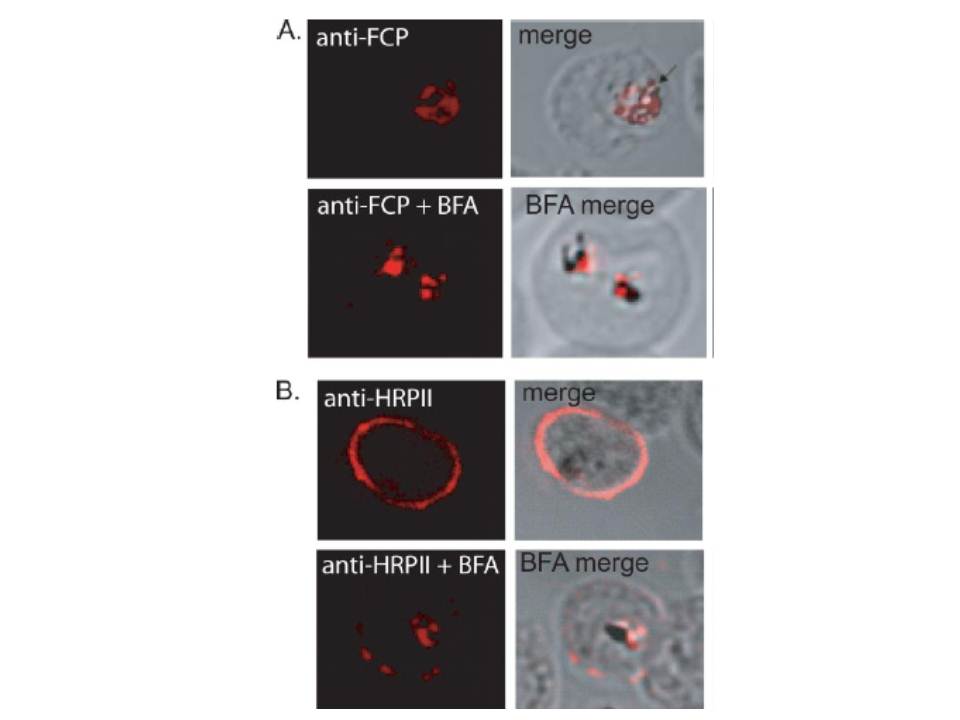FCP localizes to the FV but does not traffic via the classical or alternate secretory pathways. A, immunofluorescence using anti-FCP revealed a discrete localization to the parasite FV. Ring stage parasites were treated either with 5 mg/ml BFA (anti-FCPP+BFA) or solvent as control (anti-FCP) for 12 h before immunofluorescence microscopy. BFA treatment did not alter FV localization of FCP. B, as a control experiment, parasites treated with BFA (anti-HRPIIBFA) or without BFA (anti-HRPII) were stained using antisera against a known secreted protein, HRPII. HRPII was localized predominantly to the cytoplasm of the host infected erythrocyte (anti-HRPII). BFA treatment resulted in a significant loss in erythrocyte localization of HRPII and a concomitant increase in the parasite cytoplasm (anti-HRPII + BFA).
McIntosh MT, Vaid A, Hosgood HD, Vijay J, Bhattacharya A, Sahani MH, Baevova P, Joiner KA, Sharma P. Traffic to the malaria parasite food vacuole: a novel pathway involving a phosphatidylinositol 3-phosphate-binding protein. J Biol Chem. 2007 282:11499-508.
Other associated proteins
| PFID | Formal Annotation |
|---|---|
| PF3D7_1460100 | FYVE and coiled-coil domain-containing protein |
